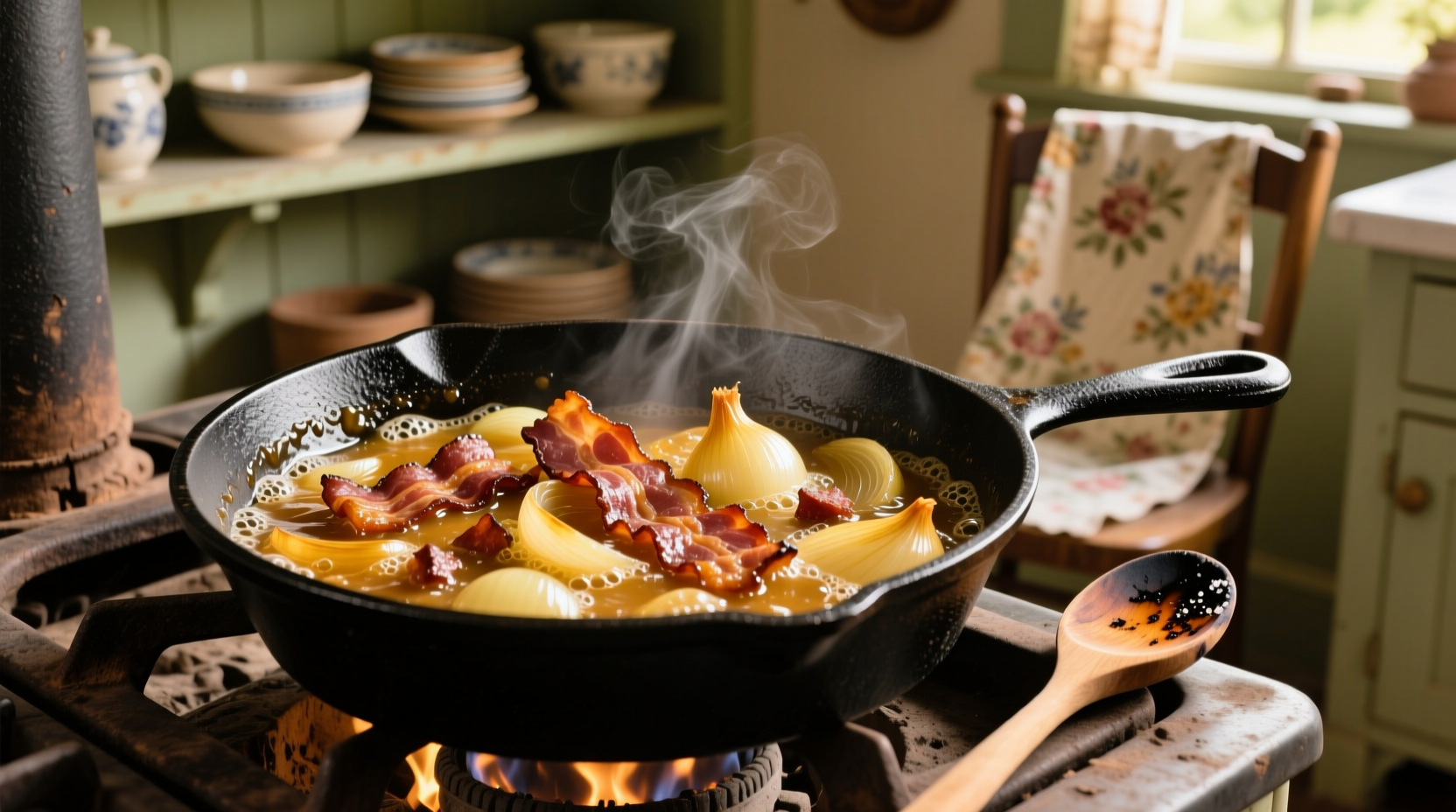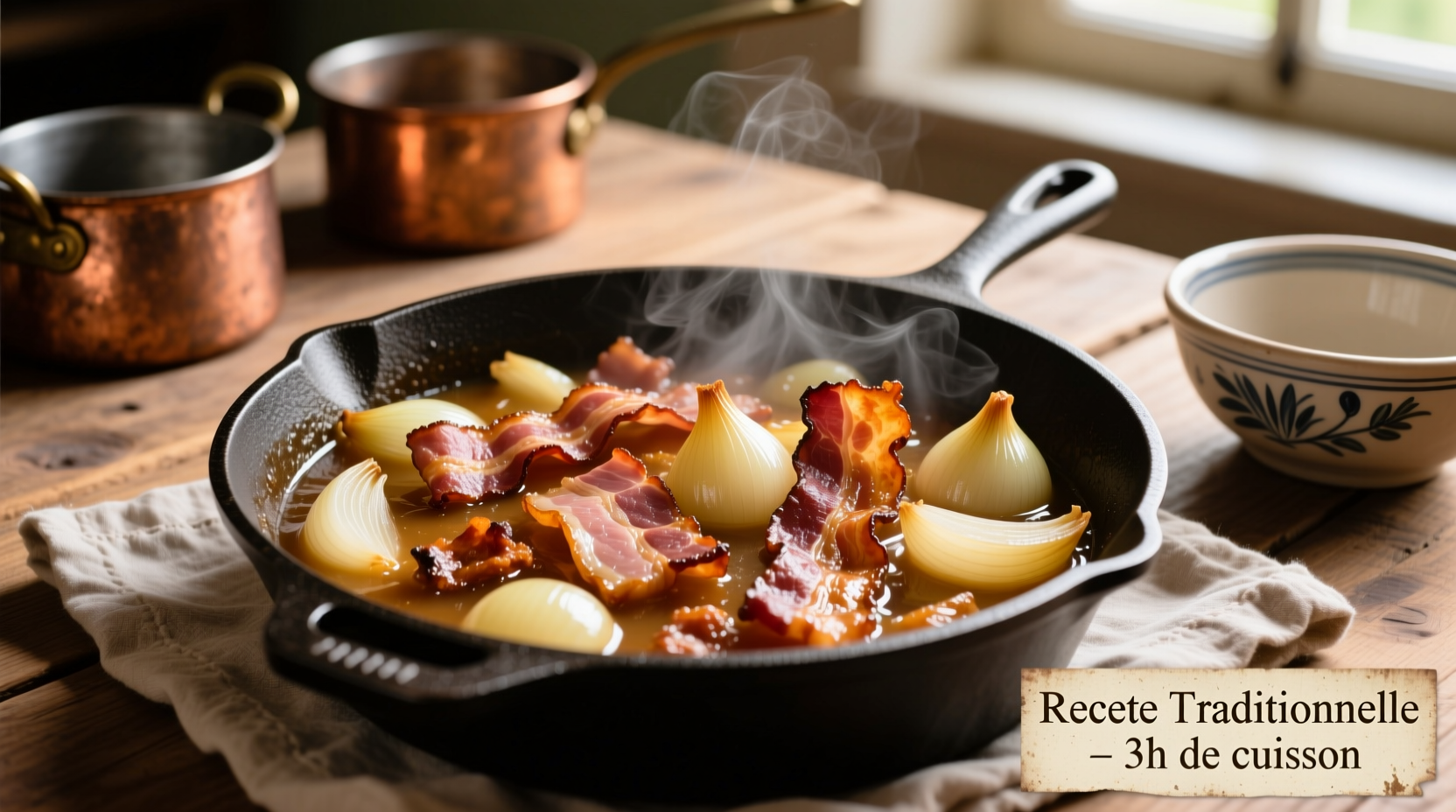Transform simple pantry staples into a restaurant-quality condiment that adds complex umami depth to everyday meals. Our perfected bacon onion compote recipe balances sweet caramelization with smoky richness, creating a versatile kitchen staple that elevates everything from weeknight dinners to special occasion menus. Whether you're a beginner cook or seasoned home chef, this foolproof method delivers consistently impressive results.
Gathering Your Ingredients
Quality ingredients make the difference between ordinary and extraordinary compote. For best results, use thick-cut bacon and fresh yellow onions:
- 6 slices thick-cut bacon, chopped (about 8 oz)
- 3 large yellow onions, thinly sliced
- 2 tablespoons brown sugar
- 1 cup beef broth (low sodium)
- 2 tablespoons apple cider vinegar
- 1 teaspoon fresh thyme leaves
| Ingredient Variation | Best For | Flavor Impact |
|---|---|---|
| Shallots instead of onions | Fine dining presentations | Milder, more delicate sweetness |
| Maple syrup instead of sugar | Breakfast applications | Earthy sweetness with wood notes |
| Red wine vinegar substitution | Rich meat pairings | Bright acidity cuts through fat |
Step-by-Step Cooking Process
Preparing the Bacon Base
Start by rendering 6 slices of chopped bacon in a heavy-bottomed skillet over medium-low heat. Cook slowly until crisp (about 8-10 minutes), then remove bacon with a slotted spoon, leaving 2 tablespoons of rendered fat in the pan. This slow rendering technique extracts maximum flavor while preventing burning - a professional chef's secret for perfect compote foundation.
Caramelizing the Onions
Add sliced onions to the bacon fat and cook over medium-low heat, stirring occasionally. The caramelization process takes 25-30 minutes - don't rush it! As culinary expert Harold McGee explains in On Food and Cooking, proper caramelization develops over 30+ chemical reactions that create complex flavor compounds (University of Illinois Food Science Department confirms this multi-stage browning process).

Building Flavor Layers
Once onions reach deep golden brown, return cooked bacon to the pan. Add brown sugar, stirring until dissolved. Deglaze with beef broth, scraping up any browned bits from the bottom of the pan - these fond particles contain concentrated flavor. Reduce heat to low and simmer uncovered for 15 minutes until thickened.
Final Seasoning and Texture
Stir in apple cider vinegar and fresh thyme. The acid brightens the rich flavors and balances sweetness. For restaurant-quality texture, cook until the compote holds its shape when spooned but still has visible onion strands. Properly cooked compote should spread easily but not run like a sauce.
When This Compote Shines (And When to Skip It)
Understanding context boundaries ensures perfect results every time:
- Ideal applications: Burger topping, roasted chicken accompaniment, charcuterie board component, sandwich spread
- Avoid with: Delicate fish dishes, vegetarian meals (unless substituting mushroom bacon), light summer salads
- Flavor pairing science: The Maillard reaction products in caramelized onions complement grilled meats' pyrazines (USDA Food Research documents these flavor synergy principles)
Storage and Usage Tips
Store cooled compote in an airtight container in the refrigerator for up to 10 days, or freeze for 3 months. The flavor actually improves after 24 hours as flavors meld. For best results when reheating, add a splash of broth or water to restore moisture.
Pro Chef Techniques for Next-Level Results
Elevate your compote with these professional kitchen secrets:
- Add a pinch of baking soda (1/8 tsp) to onions during cooking to accelerate caramelization without burning
- Use a combination of yellow and red onions for complex sweetness profiles
- Finish with a dash of smoked paprika for extra depth without additional cooking
- For elegant presentations, strain excess liquid and press compote through a tamis for refined texture
Historical Evolution of Onion Compotes
Onion compotes have evolved significantly from their medieval origins:
- 14th century: Simple onion preserves cooked with honey in monastic kitchens
- 18th century: French chefs incorporated wine and herbs for refined versions
- Early 1900s: American diners began adding bacon for smoky richness during bacon's popularity surge
- Modern era: Chefs now use precise temperature control (275-300°F) for optimal caramelization chemistry











 浙公网安备
33010002000092号
浙公网安备
33010002000092号 浙B2-20120091-4
浙B2-20120091-4